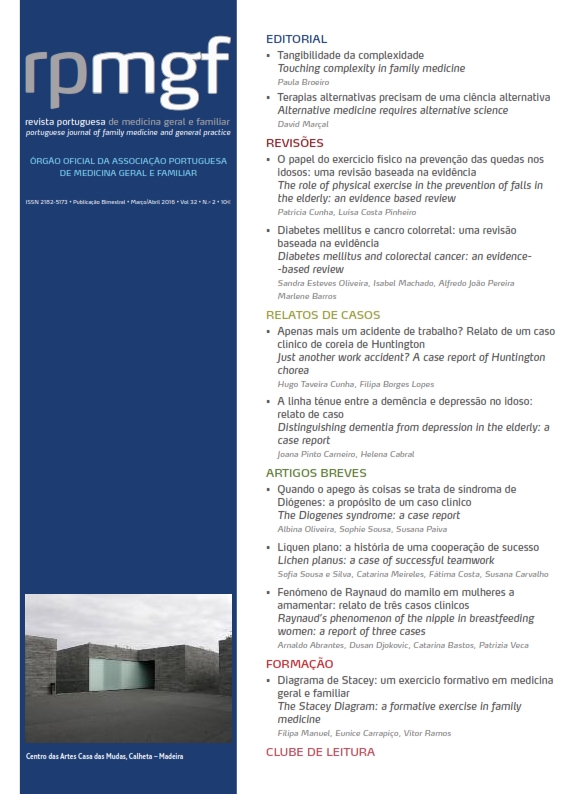Lichen planus: a case of successful teamwork
DOI:
https://doi.org/10.32385/rpmgf.v32i2.11737Keywords:
Lichen planus, GriseofulvinAbstract
Introduction: Skin complaints are a common cause for visits to the primary care physician. This case report describes a patient diagnosed with lichen planus, which is an uncommon health problem. It is a chronic, inflammatory, immune-mediated disease of unknown etiology that affects from 0.2 to 5% of the population. Case report: A 60 year-old male patient, previously in good health, saw his family physician in October 2014 complaining of pruritic papules on the hands, trunk, back and feet, which appeared one month before. He also had pain on pressure over his fingernails. Physical examination showed polygonal, flat, well-defined purple papules, grouped and confluent, on the anterior surface of the wrists, chest, back, and the ventral region of the ankle. The patient also presented nail clubbing, erythema on the anterior surface of the hands, periungueal erythema affecting the matrix, thinning, and longitudinal grooves of the nail surface and pain on palpation of the root of the nails. The primary care physician requested dermatology consultation via the on-line referral service (ALERT®). The dermatologist suggested the diagnosis of lichen planus. The patient began therapy with a topical corticosteroid, which was not helpful. He subsequently started treatment with griseofulvin, 500mg per day, which was effective. Comment: This case report emphasizes the importance of communication between specialists to address the patient’s problems, in order to expedite treatment and improve quality of life.Downloads
Downloads
Published
Issue
Section
License
The authors will assign to the RPMGF the sole right to publish and distribute the content of the manuscript specified in this declaration via physical, electronic, broadcasting or any other medium that may come into existence. They also grant the RPMGF the right to use and exploit this manuscript, in particular by assigning, selling or licensing its content. This permission is permanent and takes effect from the moment the manuscript is submitted, has the maximum duration allowed by applicable Portuguese or international law and is of worldwide scope. The authors further declare that this assignment is made free of charge. If the RPMGF informs the authors that it is not going to publish their manuscript, the exclusive assignment of rights ceases forthwith.
The authors authorise the RPMGF (or any entity it may appoint) to act on their behalf when it believes that copyright may have been infringed.





